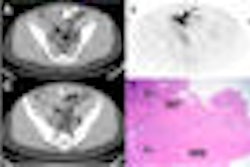Early Alzheimer's disease detected by a compound that binds to brain plaques appears likely to progress into symptomatic Alzheimer's disease with dementia, according to a report in the December issue of Archives of Neurology.
Preclinical Alzheimer's disease can be detected by screening an individual's cerebrospinal fluid for biomarkers of the condition, according to the study (Arch Neurol, Vol. 66:12, pp. 1469-1475). In addition, imaging with PET using a compound known as Pittsburgh compound B (PiB), which binds to beta-amyloid, can detect deposits of the substance in living patients.
Lead author Dr. John C. Morris and colleagues at Washington University in St. Louis assessed 159 older adults with an average age of 71.5 years, who had undergone PET scans using PiB and did not have symptoms of dementia. These patients were followed for 0.8 to 5.5 years after having the scan and underwent between two and six assessments for dementia during that time frame.
A total of 23 participants progressed to clinically detectable dementia during follow-up, while nine people were diagnosed with dementia of the Alzheimer's type. The diagnoses were made by specialist clinicians who diagnosed the condition at an earlier stage than typically occurs, and they corroborated the diagnoses by declines in multiple cognitive domains, as well as a loss of volume in certain areas of the brain.
The PiB imaging technique found that individuals in whom the compound bound to more beta-amyloid plaques were more likely to develop Alzheimer's disease and related dementia. However, the test did not predict which individuals would develop dementia not caused by Alzheimer's disease.
Related Reading
ASL-MRI identifies mild cases of Alzheimer's in elderly patients, November 10, 2009
3D software boosts diagnostic accuracy for Alzheimer's, December 1, 2009
Study uses MRI to better detect Alzheimer's, November 17, 2009
ASL-MRI identifies mild cases of Alzheimer's in elderly patients, November 10, 2009
Intense x-rays expose Alzheimer's disease, August 6, 2009
Copyright © 2009 AuntMinnie.com




















